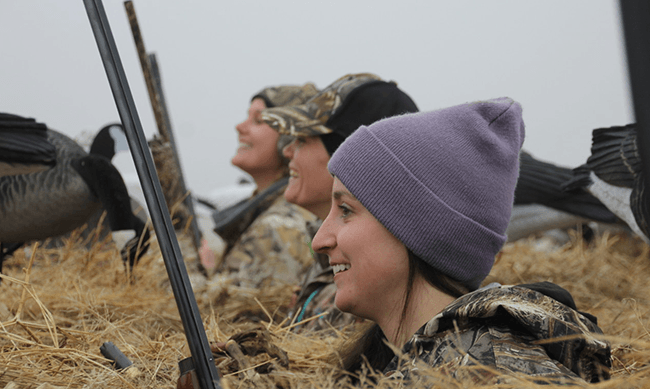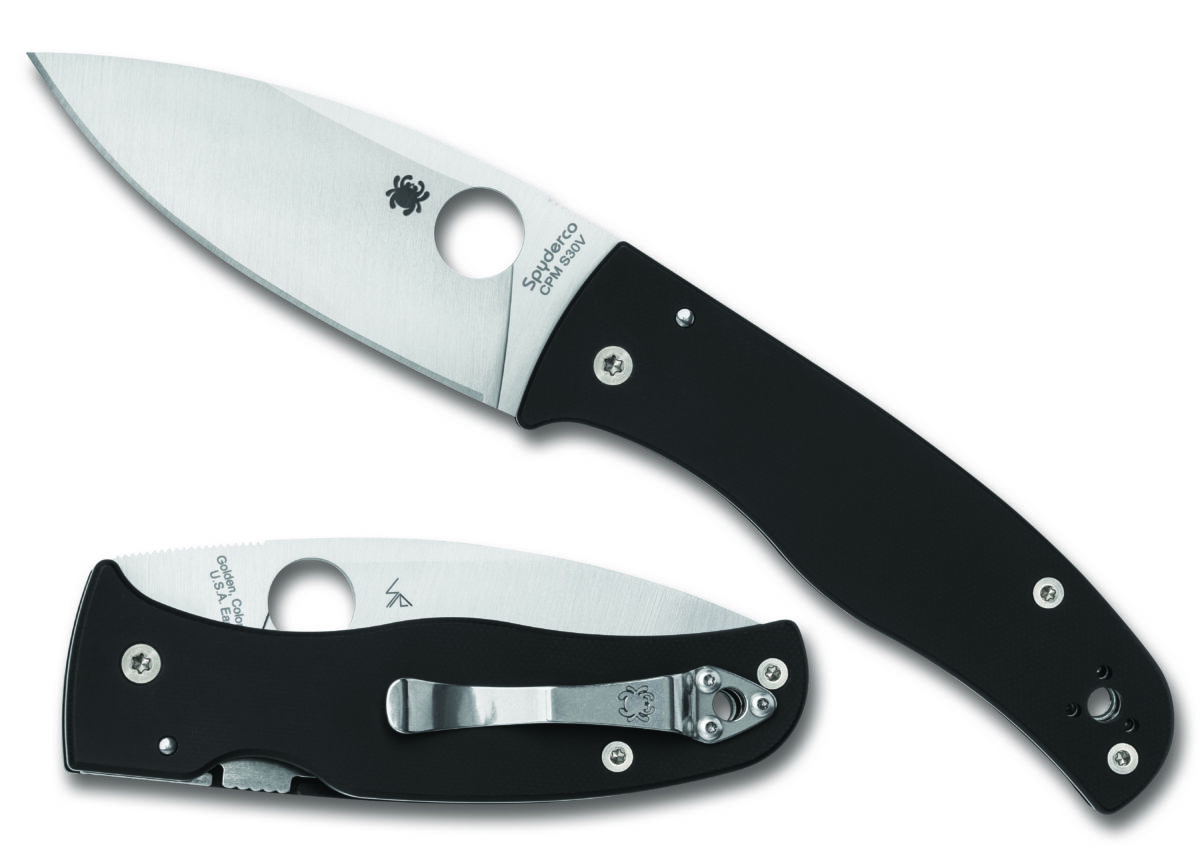
How Wildlife Conservation Organizations Are Now Conserving Hunters
By Michael Pendley
Most wildlife conservations organizations were started to do just that, conserve and increase wildlife populations. They did a good job. Hunting opportunities abound nationwide and most of our huntable species are thriving.
Based on those strong population numbers alone, one might think hunter numbers would also be on the rise. More animals to hunt should equal more hunters afield going after them. Unfortunately, that isn’t the case.
The average hunter in the U.S. right now is a white male between the ages of 55 and 64. New hunters aren’t being recruited fast enough to replace those that are aging out of the sport. Less than 5 percent of the total population actively hunts, and that number continues to fall.
Luckily, large wildlife conservation organizations are taking note and working on stemming the decline. While different organizations go about recruiting new hunters in various ways, all are working some aspect of the National Shooting Sports Foundation’s (NSSF®) +ONESM Movement into their platform.
QDMA Goes One-On-One
Hank Forester, the Quality Deer Management Association’s (QDMA) Hunting Heritage Program Manager, says it’s imperative hunters reach out to non-hunting communities for recruits.

“For years we tried the shotgun approach, with large group outings for both adults and young hunters. That style is hard to sustain and track. New adult hunters sometimes felt uncomfortable or lost in the large group setting, and youth hunters from non-hunting families didn’t always have the resources they needed to continue hunting,” said Forester.
While QDMA still holds several large-scale youth hunts across the nation each year, it is placing more emphasis on a one-on-one style of hunter recruitment.
“We’ve had tremendous success with our Field to Fork Program,” said Forester. “What we’re finding is that we need to go places where non-hunters are, like farmer’s markets and universities. We set up at these locations with cooked venison and invite people over to give it a try. Studies show that over 70 percent of the population approves of hunting for food, and the venison samples the perfect way to break the ice get a conversation about hunting started.”

The approach is working. Hank reports that participation slots in the college clubs and farmer’s market programs fill quickly. Once participants sign up, they meet over several nights to learn about hunting techniques, safety, processing and wild game cooking. From there, they attend a range day where to gain hands-on experience with either the crossbows or firearms they’ll use to hunt. The programs culminate in a hunt weekend, where participants go on mentored hunts with QDMA members and local volunteers. After the hunt, everyone reconvenes to get a hands-on lesson in game processing, and the weekend ends as a social event with wild game as the menu centerpiece.
The program makes waves. “We’ve found that adults who attend these programs together form their own hunting communities. We try to encourage that by offering follow-up events and hunts to the entire group even after the program is completed. What we are seeing is that the members of these groups form bonds that extend well past the program itself, and they come to rely on each other when they have questions or need a hand in the field,” Hank said.

Not only do the participants in the QDMA programs learn to hunt, they pay it forward by introducing others to the sport. “This is where we see the NSSF +ONE in action. We have one graduate of the program who has now taken several new hunters out on his own. He also butchers his extra venison and donates it to those interested in trying venison for the first time at the university where he works. We have started calling it ‘Venison Diplomacy,’ and it is working to attract new hunters,” says Forester.
NWTF Takes a Multi-Pronged Approach
Another conservation group active in the recruitment of new hunters is the National Wild Turkey Federation (NWTF). It is so active, in fact, it purchased a large tract of land next to its Edgefield, South Carolina headquarters for the sole purpose of hosting first-time hunters and testing new recruitment programs before implementing them across its vast network of state and local chapters.

Like QDMA, NWTF is targeting young adults, college students and families with an extended-learning program designed to not only teach newcomers how to hunt but to form a hunting community and social network that, hopefully, will last for years to come. Pete Muller, Public Relations Manager for NWTF, says they are doing that by hosting several events for each group over a year’s time.
“We start with classroom sessions, but also get the participants out in the field for range time and hunts for a variety of species like turkey, dove and deer,” said Muller. “With help from industry partners like Yeti and TriStar Arms, we are able to host and outfit group hunts on both our property and that of local landowners who volunteer their time and lands to our programs. Many of the college students have come from the nearby Clemson University Ag Department, where programs from South Carolina’s Department of Natural Resources have allowed us to offer opportunities to these students,” Pete said.

Once a new program has been refined, it is then distributed to local and state chapters, as well as R3 (recruitment, reactivation, retainment) coordinators, for implementation. This past season, for example NWTF chapters in Arizona held three turkey camps that welcomed more than 500 people, many from the metro-Phoenix area who had no past hunting experience at all. Volunteers like Tim Denny of the Mingus Mountain NWTF Chapter — NWTF encourages its chapter members to volunteer through its Mentored Hunt Challenge, in which every member who mentors a new hunter is entered into a drawing for a new Yeti 65-quart cooler — organize the hunts and work to pair new hunters with more experienced mentors so that everyone has an enjoyable time at camp.
On still another front, NWTF’s Hunting Heritage program partners new hunters with outfitters who volunteer to take them on high success-rate guided hunts. The hope for this program is that new hunters learn tips and techniques from professional guides, eliminating a lot of the frustrating trial and error they would go through if learning to hunt on their own — trial and error that can leave one looking for a different pastime.
Delta Waterfowl — Partnering Among the Cattails
The decrease in hunter numbers is also a concern to Joel Brice, Vice President of Waterfowl and Hunter Recruitment for Delta Waterfowl. “We encourage our members through our First Hunt Program to mentor new hunters, not just for one hunt, but over an entire season to teach them all aspects of waterfowl hunting, including boating safety. Since 2003, Delta Waterfowl has introduced over 68,000 people to hunting. Last year alone featured 260 mentored hunt events with over 12,000 participants. Both members and new hunters who participate in the First Hunt Program get recognized with certificates and collectible pins,” says Brice.

Like QDMA and NWTF, Delta Waterfowl has found great success in targeting young adults around universities in their search for interested new hunters, something that Brice says there’s a real need for.
“In working with various universities, we’ve discovered a troubling trend,” says Brice. “Over half the current wildlife degree majors at many schools not only don’t hunt actively, they’ve never hunted at all! These are the students who, upon completion of their degree, will be helping to craft wildlife laws for years to come.”

“We’ve targeted these non-hunting wildlife majors to not only teach them to hunt but to show them the North American Model of Wildlife Conservation in action. That way, even if they don’t continue hunting in the future, they will have a much better understanding of it in their future careers.”
Participants are teamed with professors and volunteers and meet several times over a semester to discuss varying aspects of waterfowl hunting and get hands-on experience in the field. The program concludes in an end-of-semester hunt where they get to put their new skills to work in real-world conditions.
***
These groups and others like them are working hard to ensure that not only will future generations have game to hunt, there will be hunters to pursue that game. As hard as these groups are working, their efforts will only be effective if their rank-and-file memberships embrace NSSF’s +ONE Movement and introduce someone new to the sport of hunting. If you are a member of a wildlife conservation group, get involved by working with your local and state chapters to find and mentor people in your area who might be interested in learning to hunt. The future of our sport depends on it.




 The partnership between firearm manufacturers and wildlife conservation agencies is a model for the world. It shows how industry participation can positively impact the environment and highlights the need for ongoing support for conservation efforts.
In short, the relationship between firearm manufacturers and wildlife conservation is vital. By understanding how excise taxes and industry contributions fund conservation, hunters and shooters can see the positive impact their purchases have on preserving nature for future generations.
Partner with a Payer
The Partner with a Payer initiative was developed to help generations of employees in the firearm, archery and angling industries, state agencies and the U.S. Fish and Wildlife Service to better understand their, and each other’s, roles in conservation.
The partnership between firearm manufacturers and wildlife conservation agencies is a model for the world. It shows how industry participation can positively impact the environment and highlights the need for ongoing support for conservation efforts.
In short, the relationship between firearm manufacturers and wildlife conservation is vital. By understanding how excise taxes and industry contributions fund conservation, hunters and shooters can see the positive impact their purchases have on preserving nature for future generations.
Partner with a Payer
The Partner with a Payer initiative was developed to help generations of employees in the firearm, archery and angling industries, state agencies and the U.S. Fish and Wildlife Service to better understand their, and each other’s, roles in conservation.












